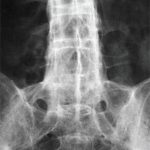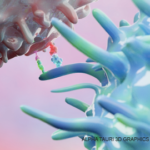NEW YORK (Reuters Health)—Synovial gene expression and histology can be used to divide rheumatoid arthritis (RA) into high, low, and mixed inflammatory subtypes, according to results from the Accelerating Medicine Partnership: RA/SLE Network.
“The actionable implication of these findings is that it may be worth considering synovial biopsies in patients who are not responding to several of the usual immune-targeting therapies, particularly if they have low markers of inflammation in their blood,” Dr. Dana E. Orange from New York Genome Center and The Rockefeller University, New York told Reuters Health by email. “It may be that these patients also have little synovial inflammation, and immune suppression may not be useful for them.”
Extensive synovial inflammation in RA can lead to joint destruction, but the classification of RA synovium is not yet included in current RA diagnostic or treatment guidelines.
Dr. Orange and colleagues used machine-learning techniques to analyze clinical, histologic, and gene-expression data from 123 RA patients and 6 osteoarthritis patients, with the aim of gaining insights into tissue inflammation and subclassification of RA. The findings were reported online February 22 in Arthritis and Rheumatology.
They scored 20 histologic features of the synovial samples, finally settling on 10 features present in at least 5% of samples with at least fair inter-pathologist reliability.
RNA sequencing data suggested three distinct subtypes of RA synovium: low inflammatory, high inflammatory, and mixed.
Expression scores corresponding with immunity, immune-cell signaling pathways, cytokines, and chemokines increased with progression from the low- to high-inflammatory subtypes, whereas expression scores corresponding with gene sets encoding glycoproteins and protocadherins were higher in low-inflammatory and mixed subtypes than in the high-inflammatory subtype.
The high-inflammatory subtype also demonstrated high expression of both myeloid genes and lymphoid genes, whereas the low-inflammatory subtype was enriched in neuronal and TGF-beta signaling pathway genes with a paucity of inflammatory gene expression.
Histologic findings most strongly represented in the high-inflammatory subtype included three plasma-cell features: binucleate plasma cells, plasma-cell percentage, and Russell bodies.
Patients with the high-inflammatory synovial subtype had higher levels of markers of systemic inflammation and autoantibodies, and their C-reactive protein (CRP) levels correlated significantly with pain.
In contrast, patients with the low-inflammatory synovial subtype had little tissue inflammation, and their pain levels did not correlate with CRP levels.
“We were surprised to find that some patients with rheumatoid arthritis had high tender and swollen joint counts while exhibiting minimal inflammation in their tissue and normal erythrocyte sedimentation rates (ESRs) and CRPs,” Dr. Orange said. “One interpretation of this result is that these patients may have developed osteoarthritis in the joint that we evaluated and have active rheumatoid arthritis in their other joints. However, the discrepancy between high joint counts and normal acute-phase reactants raises the question of whether any of their other joints were highly inflamed.”


